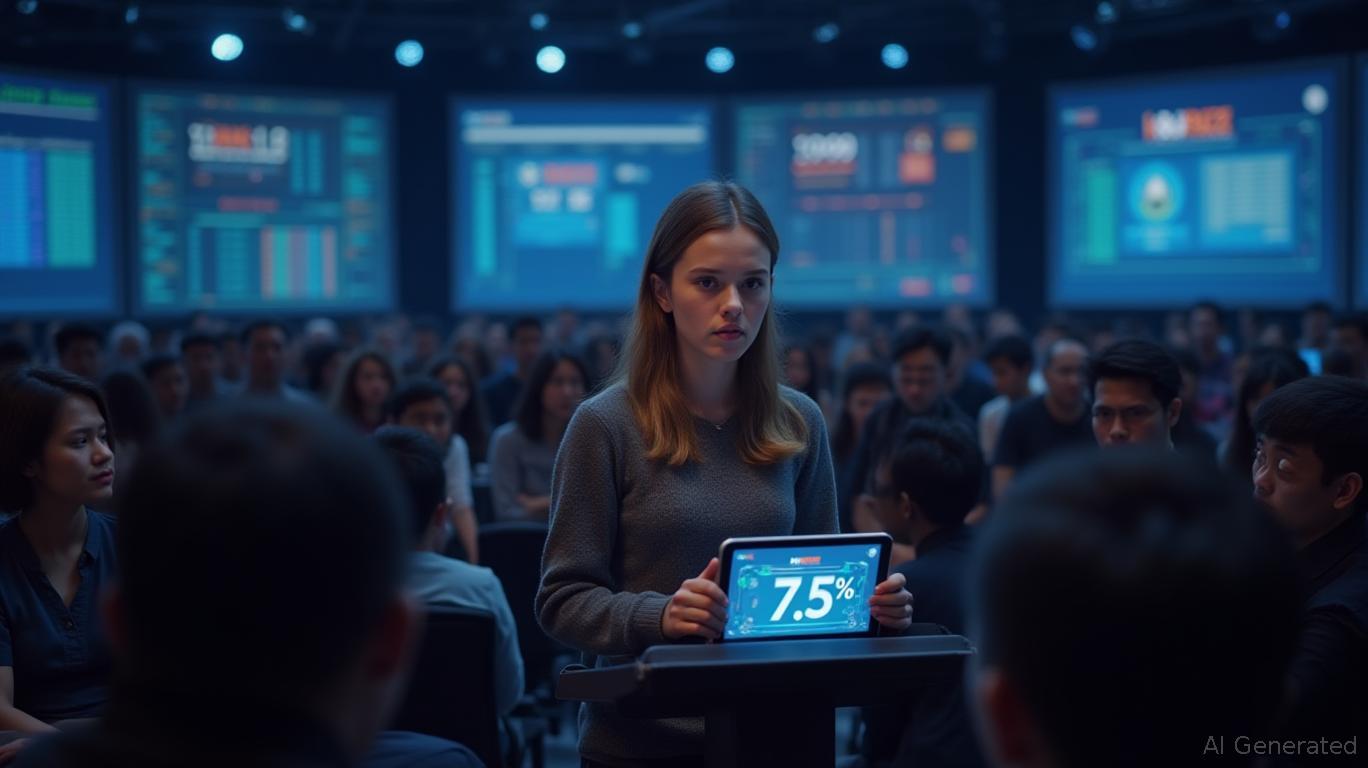AInvest Newsletter
Daily stocks & crypto headlines, free to your inbox
The inaugural K Prize, a rigorous AI coding challenge launched by the Laude Institute and co-founder of Perplexity Andy Konwinski, has exposed significant limitations in current AI programming capabilities. The competition, designed to test real-world problem-solving skills in software engineering, saw the highest score of just 7.5%, awarded to Brazilian prompt engineer Eduardo Rocha de Andrade. This stark result highlights
between AI's perceived potential and its practical readiness, particularly in high-stakes domains like blockchain development [1].The K Prize’s methodology distinguishes itself by creating a “contamination-free” benchmark. Unlike traditional evaluations such as SWE-Bench, which use static problem sets that AI models might inadvertently train against, the K Prize dynamically sources GitHub issues flagged after submission deadlines. This approach aims to prevent models from leveraging pre-existing knowledge of test data, ensuring a more accurate assessment of generalization capabilities [1]. Andy Konwinski, a key architect of the initiative, emphasized the importance of rigorous benchmarks, stating, “We’re glad we built a benchmark that is actually hard,” adding that the competition’s structure—favoring open-source models and limiting computational resources—promotes accessibility for smaller teams and independent researchers [1].
The 7.5% score pales in comparison to SWE-Bench’s reported top scores of 75% on its “Verified” test and 34% on the more challenging “Full” test. This discrepancy underscores concerns about benchmark contamination, where models may overfit to training data that overlaps with test problems. Princeton researcher Sayash Kapoor noted that without experiments like the K Prize, it remains unclear whether low scores stem from contaminated data or the inherent difficulty of sourcing novel issues [1]. The K Prize’s iterative design, which plans to update test problems every few months, aims to address this by creating a continuously evolving challenge that demands true adaptability from AI models.
Konwinski’s $1 million pledge for the first open-source model to achieve over 90% accuracy reflects a broader push toward democratizing AI innovation. By incentivizing open-source solutions and resource-efficient models, the K Prize challenges the industry to move beyond proprietary systems dominated by large tech firms. This approach aligns with the competition’s goal of fostering practical AI applications, particularly in fields like blockchain, where code precision and security are non-negotiable [1]. Konwinski further criticized the “hype” surrounding AI’s capabilities, noting that claims of AI doctors and lawyers remain far from reality. The K Prize’s results, he argued, are a necessary reality check: “If you listen to the hype, it’s like we should be seeing AI doctors and AI lawyers and AI software engineers, and that’s just not true” [1].
For the cryptocurrency sector, the implications are clear. AI-driven tools for smart contract development, automated audits, or algorithmic trading require robust coding capabilities to ensure reliability and security. The K Prize’s findings suggest that while AI can assist in these areas, it is not yet capable of autonomous, high-stakes decision-making. Human oversight remains critical, particularly in blockchain applications where even minor errors can lead to significant financial or operational risks [1].
The competition’s long-term vision is to iteratively refine AI’s problem-solving abilities. Konwinski anticipates that as the K Prize evolves, participants will adapt to its dynamic challenges, fostering breakthroughs in generalization and real-world applicability. This iterative process, he explained, is essential for pushing AI beyond its current limits and toward “genuine mastery of complex tasks” [1].
The K Prize represents a pivotal step in redefining how AI is evaluated. By prioritizing transparency, accessibility, and real-world relevance, the initiative challenges the industry to shift focus from theoretical benchmarks to practical, deployable solutions. While the initial results are sobering, they underscore the need for continued, rigorous testing and a collaborative approach to AI development. As the competition progresses, its impact on shaping the future of AI in critical technological fields will become increasingly evident [1].
Source: [1] [Shocking Reality: AI Coding Challenge Reveals Grim First Results] [https://coinmarketcap.com/community/articles/688180dacdd3e84fefeeda04/]

Quickly understand the history and background of various well-known coins

Dec.02 2025

Dec.02 2025

Dec.02 2025

Dec.02 2025

Dec.02 2025
Daily stocks & crypto headlines, free to your inbox
Comments
No comments yet